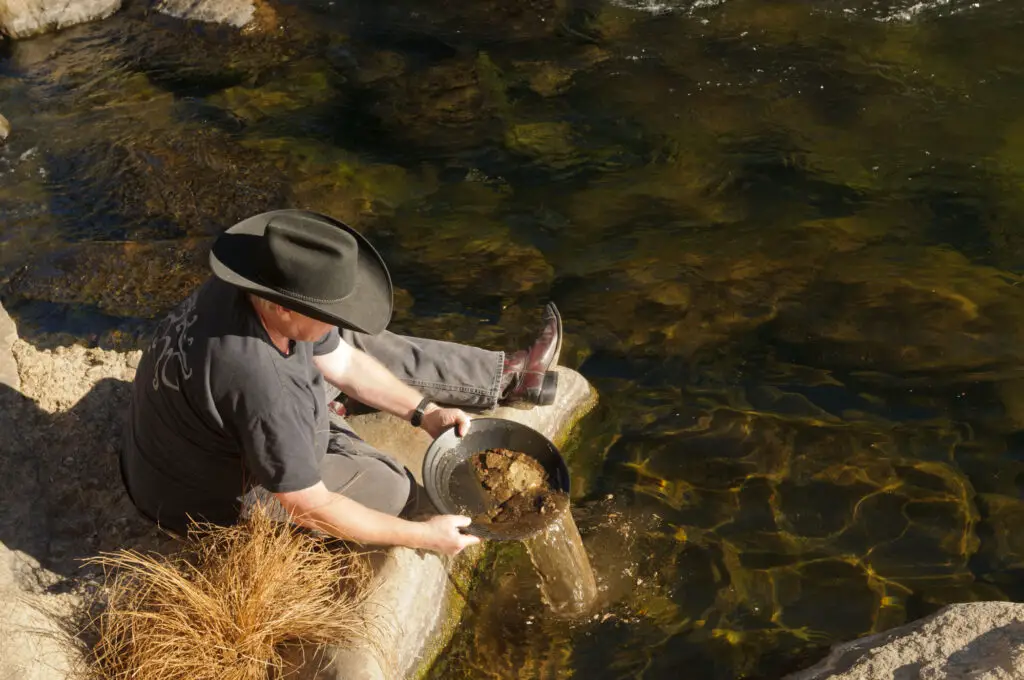While the California Gold Rush of the mid-1800s may be the most famous gold prospecting event in American history, you might be surprised to learn that the glint of this precious metal can also be found in the Buckeye State.
Ohio, with its numerous rivers and creeks, has become an increasingly popular destination for amateur gold prospectors and treasure hunters seeking to strike it rich. But before you grab your pan and head to the nearest waterway, it’s important to familiarize yourself with the legalities surrounding gold panning in Ohio.
In this comprehensive guide, we will dive into the fascinating world of gold panning in the Buckeye State, providing you with a clear understanding of the laws, rules, and regulations that govern this exciting pastime. We’ll touch on the permits required, restricted areas, and best practices to ensure you can enjoy your gold panning adventure while staying on the right side of the law. Join us as we explore the golden opportunities and the legal framework that keeps the pursuit of this alluring metal a responsible and enjoyable endeavour for all.

What Are The Laws For Panning For Gold In Ohio?
hile gold panning in Ohio is legal, it is essential to be aware of the laws, regulations, and best practices to protect the environment and preserve the rights of property owners. The following are some key aspects to keep in mind while gold panning in Ohio:
Private Property: Always obtain permission from the landowner before panning for gold on private property. Trespassing on private land without consent is against the law, and you may be subject to fines or other penalties.
Public Land: Gold panning on public land, such as state parks or national forests, is generally allowed, but you may need a permit. Be sure to check with the managing agency for the specific area you plan to pan in for any specific rules or restrictions.
Waterways: Many rivers and streams in Ohio are subject to the state’s environmental regulations, and you must avoid disrupting the natural habitat or contaminating the water. Be aware of the Ohio Environmental Protection Agency (EPA) regulations regarding water quality and aquatic life.
Prospecting Equipment: The use of certain equipment, such as motorized sluices or suction dredges, may be prohibited or require additional permits. Check with the appropriate state agency or land manager for regulations on the use of such equipment.
Fossicking and Collecting: In some cases, gold panning may be considered a form of “fossicking” or “collecting,” and specific rules may apply. Consult the Ohio Department of Natural Resources (ODNR) for more information on these activities.
Historical and Cultural Sites: Be respectful of any historical or cultural sites you may encounter during your gold panning adventures. It is illegal to disturb or remove artifacts from these locations.
Leave No Trace: Remember to practice Leave No Trace principles while gold panning to minimize your impact on the environment. This includes packing out all trash, filling in holes, and respecting wildlife and other visitors.
As laws and regulations can change over time, it is always a good idea to check with local authorities, land management agencies, or the ODNR for the most up-to-date information on gold panning laws in Ohio before you embark on your prospecting adventure.
Best Places To Pan For Gold In Ohio
Although Ohio is not as well-known for its gold as some other states, there are several rivers and creeks where gold has been discovered, making them popular spots for prospectors and hobbyists. Some of the best places to pan for gold in Ohio include:
Clear Fork River: Located in Richland and Morrow Counties, the Clear Fork River has been known to produce small flakes of gold. Prospectors often pan for gold near the confluence with the Black Fork River.
Swank Claim (Richland and Knox Counties): Managed by the Gold Prospectors Association of America (GPAA), the Swank Claim is situated along the Clear Fork River. This area is open to GPAA members and provides a great opportunity for panning and sluicing.
Mohican River: Flowing through Ashland, Holmes, and Knox Counties, the Mohican River is another location where gold has been found. The stretch near the town of Loudonville has been particularly fruitful for gold panners.
Greenville Creek: Located in Darke County, Greenville Creek has produced small amounts of gold in the past. Panning in the area around the town of Greenville might yield some success.
Scioto River: The Scioto River in central Ohio is known to contain fine gold particles. Try your luck at panning along the riverbanks in Pickaway, Franklin, and Delaware Counties.
Olentangy River: This river, located in Delaware County, has reported gold discoveries in the past. Panning near the city of Delaware might result in finding small gold flakes.
Mad River: Flowing through Champaign, Logan, and Union Counties, the Mad River has been known to produce gold. Prospecting in the areas around West Liberty and Urbana might prove fruitful.
Keep in mind that while these locations have produced gold in the past, there is no guarantee that you will find significant amounts of the precious metal. It’s essential to respect private property, obtain any necessary permits, and follow all applicable laws and regulations while gold panning in Ohio. Remember to practice responsible gold panning and adhere to Leave No Trace principles to minimize your impact on the environment. Happy prospecting!
What Is The Biggest Nugget Found In A River In Ohio?
There is no widely documented or well-known record of the largest gold nugget found in a river in Ohio. The gold discoveries in Ohio have primarily consisted of small flakes and fine gold particles rather than large nuggets. Most of the gold in Ohio is believed to be glacial gold, deposited by glaciers that moved through the area thousands of years ago. This type of gold is typically found in the form of small flakes and dust.
While you may not find a record-breaking nugget in Ohio, there is still potential for finding gold while panning in the state. It is essential to remember that gold prospecting is often more about the experience and the excitement of the hunt rather than the size or value of the gold itself.

